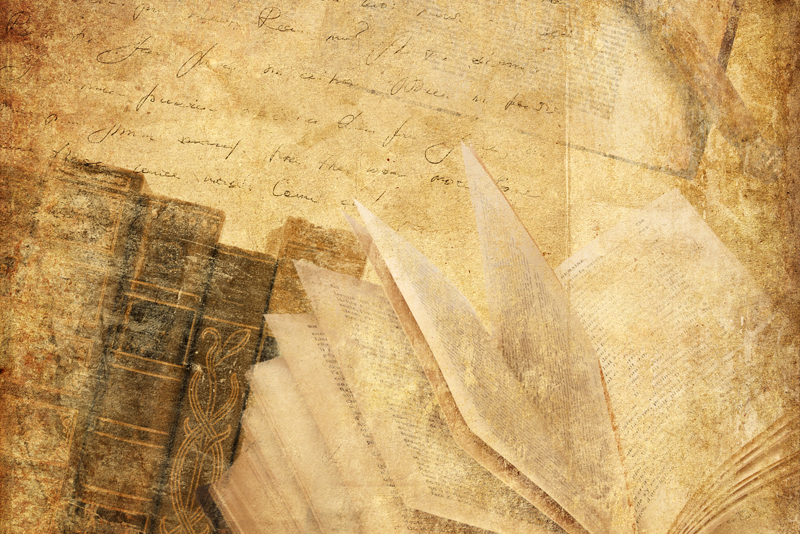Sewing Machine Thread Jams

Ever have this happen - just after you have threaded your sewing machine and bobbin in preparation for a new sewing project, you begin to sew on your fabric and for some as yet unexplained reason, the machine threads bunch up and jam in a tangled unsightly mess on the underside of the fabric? It can happen with brand new machines as well as long used machines. There can be several reasons for this to happen and yet there may be a few simple solutions.
Spool Thread
Many sewing machines today have a horizontal thread delivery (and a vertical spool option) for the needle thread. Be sure and place any older thread spool with its tiny notch on one end (the notch is used to secure the loose thread end when not in use) facing away from the side where the thread will be guided off the thread spool into the vertical tension discs and on toward the needle. Sometimes this tiny notch will catch the thread causing undue thread tension on the needle thread as it passes through the tension discs.
Place the notched end of the thread spool facing up if a vertical spool pin is used. No defined notch visible? Newer and better quality spool threads no longer have the troublesome notch at one end, instead the beginning thread end is wound into a barely discernible circular groove around one spool end. Find this small groove and face the spool thread with the groove away from the tension discs when placed on the horizontal spool pin holder or facing up on a vertical spool pin.
Having the machine's top thread and bobbin thread of the exact same type of thread is also a consideration when attempting to troubleshoot thread jams.
Thread Tension
Enough cannot be said about sewing machine thread tensioning issues. Stitching a sample stitch onto a scrap of the same fabric to be used prior to committing to stitching that first seam of a new project helps to determine if the top and bottom stitches are evenly locked in the middle of the seam. Stitch a few inches of a straight row of stitches on a folded fabric scrap and look at the stitches carefully. If loops appear on top of the stitching line, the upper thread tension is too tight. If loops appear on the bottom of the stitching line the bobbin thread tension is too tight. Both the top stitching line and the bottom stitching line should appear even. Adjust accordingly.
Consider the very first stitches at the beginning of the seam - if a jumble of thread occurs at this starting point causing a thread jam then hold onto both the needle thread and the bobbin thread together just as the machine starts stitching, giving slight hand tension to gently pull both threads. With the first uptake of the needle, the needle’s thread tail and bobbin tail are drawn down somewhat loosely into the bobbin case and can become bunched and tangled if not held onto briefly. Newer machines seem to have minimized this issue.
Machine Needles
Using the right type and size of sewing machine needle for the chosen fabric is important as well as using a new needle for a new project if the current machine needle has endured several hours of sewing use. Generally, ball-point needles work great for knits and sharp-pointed needles for woven fabrics. Using the smallest size needle that accommodates the thread size that will be used often produces the best stitches that lie equally spaced and evenly on top and bottom of the sewn fabric.
Quality Thread
Using the best quality thread is a plus although not always possible. The bargain-priced threads found piled in sale bins at the fabric store work great for occasional hand sewing but not as well for machine sewing. Lesser quality thread has a tendency to produce thread fuzz as it passes through the needle. Many sewing machine manufacturers warn against using a can of compressed dry air to blow out fuzz from the tiny spaces of the machine, particularly the newest digital electronic machines. However, a spritz or two of compressed air in the vertical thread slots that hold the tension discs and in the bobbin area of older machines helps to quickly dislodge thread lint.
Note: Use compressed canned dry air sparingly and at your discretion. Thread lint may also be removed from the vertical tension discs by using a folded piece of muslin or other non-linty fabric and gently moved back and forth within the disc spaces. A pipe cleaner or tiny brush may be used in the bobbin area to pull out any thread fuzz.
Fabric Choices
Some fabrics produce some of their own copious amounts of fuzzy thread lint. Think high-loft fleeces, some synthetic textiles with short fibers or loopy terry cloth like fabrics. It may help to keep a small, soft artist's brush handy to occasionally wipe away some of this type of fabric fuzz from the needle's throat plate, feed dogs, tension discs and bobbin area.
Any of the above few suggestions often help to keep thread jams from occurring. Give some or all a try!
Sew happy, sew inspired.
Spool Thread
Many sewing machines today have a horizontal thread delivery (and a vertical spool option) for the needle thread. Be sure and place any older thread spool with its tiny notch on one end (the notch is used to secure the loose thread end when not in use) facing away from the side where the thread will be guided off the thread spool into the vertical tension discs and on toward the needle. Sometimes this tiny notch will catch the thread causing undue thread tension on the needle thread as it passes through the tension discs.
Place the notched end of the thread spool facing up if a vertical spool pin is used. No defined notch visible? Newer and better quality spool threads no longer have the troublesome notch at one end, instead the beginning thread end is wound into a barely discernible circular groove around one spool end. Find this small groove and face the spool thread with the groove away from the tension discs when placed on the horizontal spool pin holder or facing up on a vertical spool pin.
Having the machine's top thread and bobbin thread of the exact same type of thread is also a consideration when attempting to troubleshoot thread jams.
Thread Tension
Enough cannot be said about sewing machine thread tensioning issues. Stitching a sample stitch onto a scrap of the same fabric to be used prior to committing to stitching that first seam of a new project helps to determine if the top and bottom stitches are evenly locked in the middle of the seam. Stitch a few inches of a straight row of stitches on a folded fabric scrap and look at the stitches carefully. If loops appear on top of the stitching line, the upper thread tension is too tight. If loops appear on the bottom of the stitching line the bobbin thread tension is too tight. Both the top stitching line and the bottom stitching line should appear even. Adjust accordingly.
Consider the very first stitches at the beginning of the seam - if a jumble of thread occurs at this starting point causing a thread jam then hold onto both the needle thread and the bobbin thread together just as the machine starts stitching, giving slight hand tension to gently pull both threads. With the first uptake of the needle, the needle’s thread tail and bobbin tail are drawn down somewhat loosely into the bobbin case and can become bunched and tangled if not held onto briefly. Newer machines seem to have minimized this issue.
Machine Needles
Using the right type and size of sewing machine needle for the chosen fabric is important as well as using a new needle for a new project if the current machine needle has endured several hours of sewing use. Generally, ball-point needles work great for knits and sharp-pointed needles for woven fabrics. Using the smallest size needle that accommodates the thread size that will be used often produces the best stitches that lie equally spaced and evenly on top and bottom of the sewn fabric.
Quality Thread
Using the best quality thread is a plus although not always possible. The bargain-priced threads found piled in sale bins at the fabric store work great for occasional hand sewing but not as well for machine sewing. Lesser quality thread has a tendency to produce thread fuzz as it passes through the needle. Many sewing machine manufacturers warn against using a can of compressed dry air to blow out fuzz from the tiny spaces of the machine, particularly the newest digital electronic machines. However, a spritz or two of compressed air in the vertical thread slots that hold the tension discs and in the bobbin area of older machines helps to quickly dislodge thread lint.
Note: Use compressed canned dry air sparingly and at your discretion. Thread lint may also be removed from the vertical tension discs by using a folded piece of muslin or other non-linty fabric and gently moved back and forth within the disc spaces. A pipe cleaner or tiny brush may be used in the bobbin area to pull out any thread fuzz.
Fabric Choices
Some fabrics produce some of their own copious amounts of fuzzy thread lint. Think high-loft fleeces, some synthetic textiles with short fibers or loopy terry cloth like fabrics. It may help to keep a small, soft artist's brush handy to occasionally wipe away some of this type of fabric fuzz from the needle's throat plate, feed dogs, tension discs and bobbin area.
Any of the above few suggestions often help to keep thread jams from occurring. Give some or all a try!
Sew happy, sew inspired.

Related Articles
Editor's Picks Articles
Top Ten Articles
Previous Features
Site Map
Content copyright © 2023 by Cheryl Ellex. All rights reserved.
This content was written by Cheryl Ellex. If you wish to use this content in any manner, you need written permission. Contact Cheryl Ellex for details.







